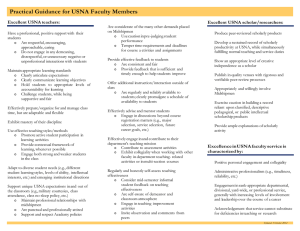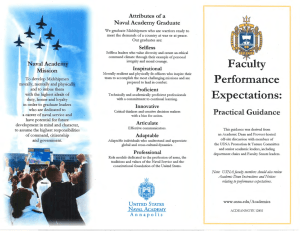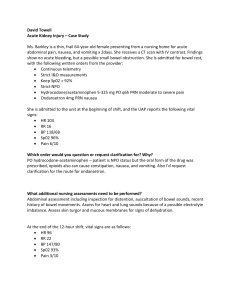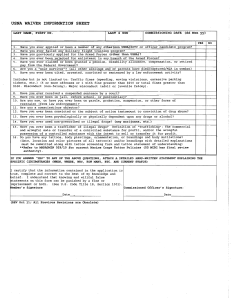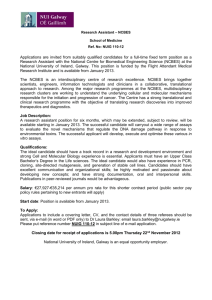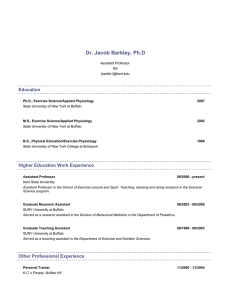MATH NEWS R USNA dt
advertisement
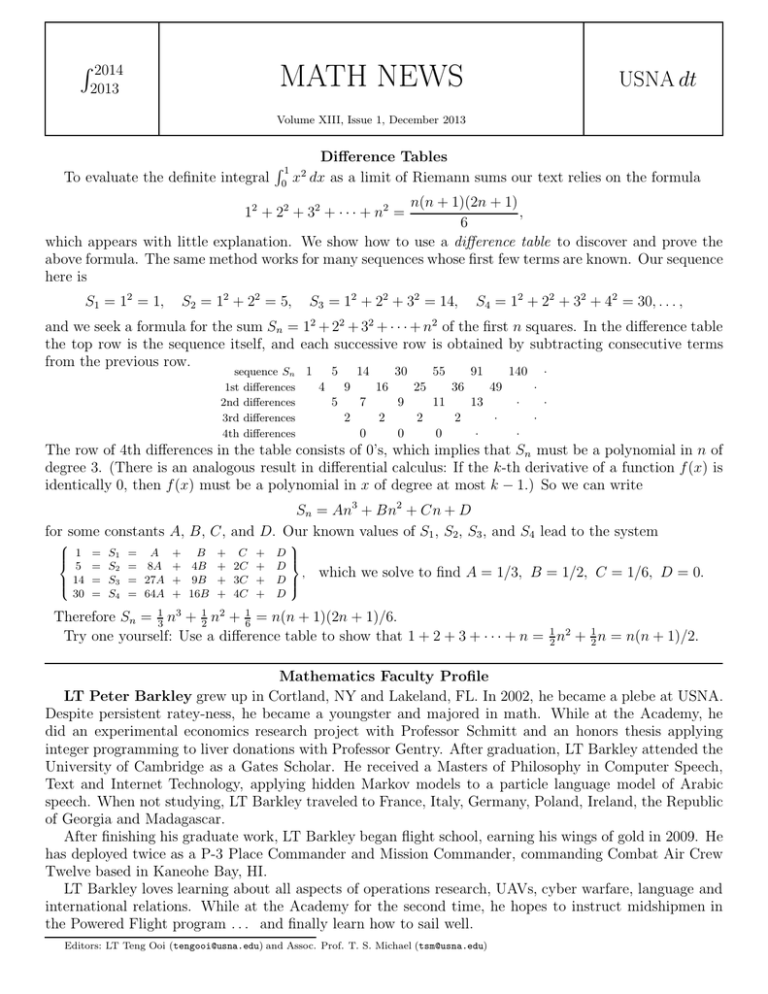
R 2014 MATH NEWS 2013 USNA dt Volume XIII, Issue 1, December 2013 To evaluate the definite integral Difference Tables x dx as a limit of Riemann sums our text relies on the formula R1 2 0 n(n + 1)(2n + 1) , 6 which appears with little explanation. We show how to use a difference table to discover and prove the above formula. The same method works for many sequences whose first few terms are known. Our sequence here is 12 + 22 + 32 + · · · + n2 = S1 = 12 = 1, S2 = 12 + 22 = 5, S3 = 12 + 22 + 32 = 14, S4 = 12 + 22 + 32 + 42 = 30, . . . , and we seek a formula for the sum Sn = 12 + 22 + 32 + · · · + n2 of the first n squares. In the difference table the top row is the sequence itself, and each successive row is obtained by subtracting consecutive terms from the previous row. sequence Sn 1 5 14 30 55 91 140 · 1st differences 4 9 16 25 36 49 · 2nd differences 5 7 9 11 13 · · 3rd differences 2 2 2 2 · · 4th differences 0 0 0 · · The row of 4th differences in the table consists of 0’s, which implies that Sn must be a polynomial in n of degree 3. (There is an analogous result in differential calculus: If the k-th derivative of a function f(x) is identically 0, then f(x) must be a polynomial in x of degree at most k − 1.) So we can write Sn = An3 + Bn2 + Cn + D for some constants A, B, C, and D. Our known values of S1 , S2, S3 , and S4 lead to the system 8 1 > > < 5 14 > > : 30 = = = = S1 S2 S3 S4 = A + B = 8A + 4B = 27A + 9B = 64A + 16B + C + + 2C + + 3C + + 4C + D D D D 9 > > = , which we solve to find A = 1/3, B = 1/2, C = 1/6, D = 0. > > ; Therefore Sn = 13 n3 + 12 n2 + 16 = n(n + 1)(2n + 1)/6. Try one yourself: Use a difference table to show that 1 + 2 + 3 + · · · + n = 12 n2 + 12 n = n(n + 1)/2. Mathematics Faculty Profile LT Peter Barkley grew up in Cortland, NY and Lakeland, FL. In 2002, he became a plebe at USNA. Despite persistent ratey-ness, he became a youngster and majored in math. While at the Academy, he did an experimental economics research project with Professor Schmitt and an honors thesis applying integer programming to liver donations with Professor Gentry. After graduation, LT Barkley attended the University of Cambridge as a Gates Scholar. He received a Masters of Philosophy in Computer Speech, Text and Internet Technology, applying hidden Markov models to a particle language model of Arabic speech. When not studying, LT Barkley traveled to France, Italy, Germany, Poland, Ireland, the Republic of Georgia and Madagascar. After finishing his graduate work, LT Barkley began flight school, earning his wings of gold in 2009. He has deployed twice as a P-3 Place Commander and Mission Commander, commanding Combat Air Crew Twelve based in Kaneohe Bay, HI. LT Barkley loves learning about all aspects of operations research, UAVs, cyber warfare, language and international relations. While at the Academy for the second time, he hopes to instruct midshipmen in the Powered Flight program . . . and finally learn how to sail well. Editors: LT Teng Ooi (tengooi@usna.edu) and Assoc. Prof. T. S. Michael (tsm@usna.edu)
